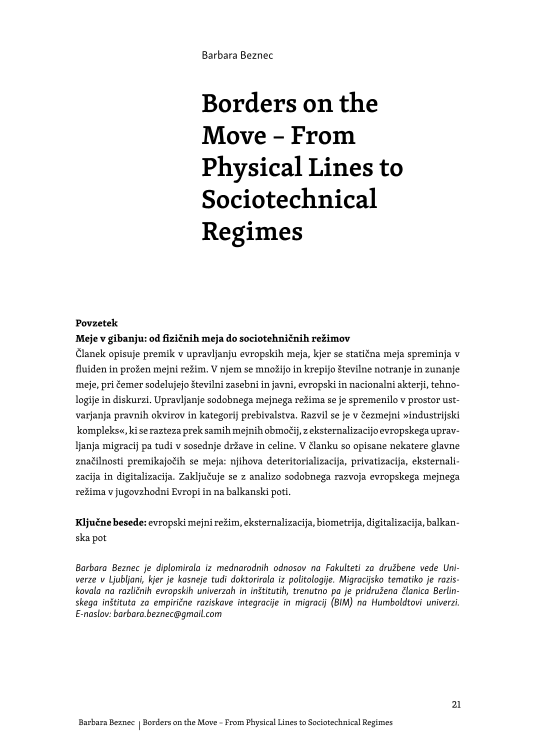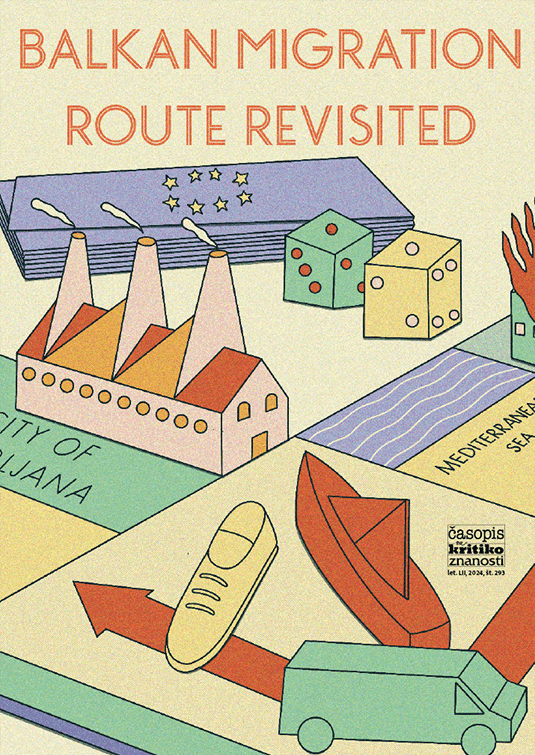The article describes the shift in European border management, where a static border is transformed into a fluid and flexible regime with numerous internal and external borders. This new regime involves a myriad of public and private actors, both European and national, along with advanced technologies and diverse discourses. Its administration is increasingly becoming a space for the production of legal frameworks and population categories. This cross-border ‘industrial complex’ extends beyond the border areas themselves, across the whole of Europe, and, with the externalization of European migration management, to neighbouring countries and continents. The article describes some of the main features of moving borders: their deterritorialisation, privatisation, externalisation, and digitalisation. It concludes with an analysis of contemporary developments of the European border regime in South-East Europe and along the Balkan Route.




